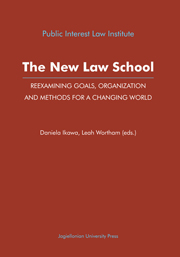Introduction
Published online by Cambridge University Press: 05 September 2014
Summary
This introduction focuses on two important contributions that this book, arising from “The Need for a New Law School” conference, makes to the dialogue on legal education reform. First, the authors engage the fundamental question of goals for legal education. Too often legal education reform discussions focus on teaching methods and institutional structure without relating these means to the ends sought to be served. Second, this book provides data and case studies on existing law school conditions in several countries from which readers can assess the similarities and differences in the difficulties faced. Implemented and proposed reform initiatives also are described. Implemented initiatives are evaluated in terms of their successes, challenges, and some unintended consequences. Some initiatives described were responses to the principles promoted by the Bologna process, while others resulted from national legislative or administrative requirements, a school's own reforms, or an individual professor's innovations. These case studies enable readers to reflect upon effective levers for and significant obstacles to change in legal education.
The book opens with a chapter by Diego Blázquez Martín focusing on the central question of legal education goals. While all the chapters engage legal education goals as a point of departure for their discussions of existing conditions, existing reform initiatives, and proposals for change, the rest of the chapters are ordered around three topics that were identified in “The Need for a New Law School” conference call for papers.
- Type
- Chapter
- Information
- The New Law SchoolReexamining Goals, Organization and Methods for a Changing World, pp. 11 - 20Publisher: Jagiellonian University PressPrint publication year: 2010



